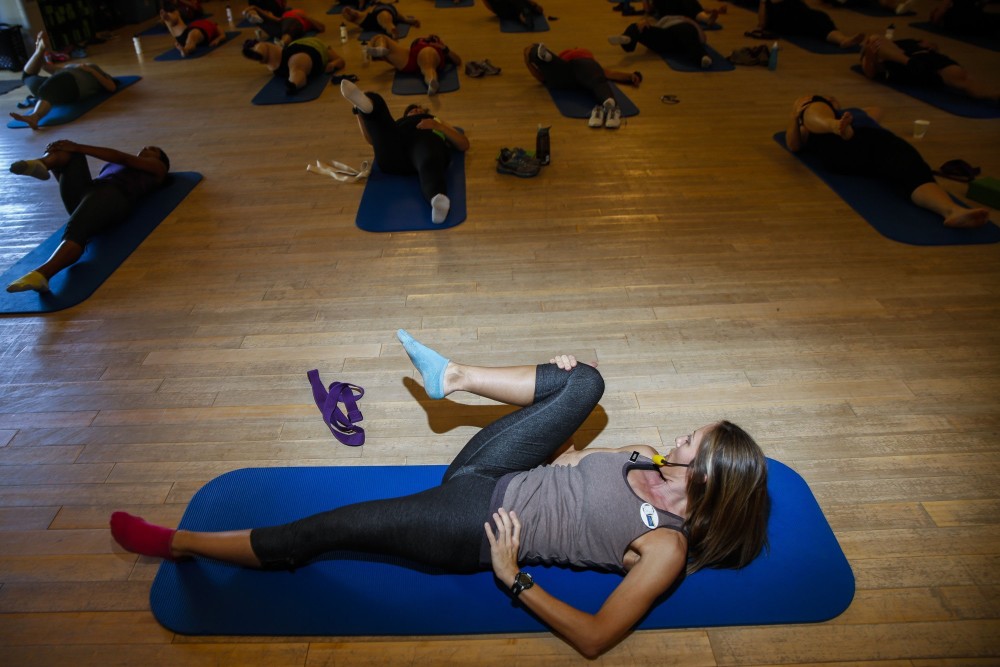By Nicole Brodeur
The Seattle Times.
SEATTLE
All you had to see were the faces of the coaches to know that one contestant had maybe gone too far in her quest to be this season’s winner of “The Biggest Loser.”
Bob Harper’s slow claps and grim face. Jillian Michaels clearly mouthing “Oh, my God” again and again before the cameras cut back to Rachel Frederickson, who had lost 155 pounds, 60 percent of her body weight, to win the $250,000 grand prize.
The finale of the reality weight-loss show set off a fiery debate in the pop-culture universe. The supposed feel-good, rah-rah, you-can-do-it vibe of the show disappeared as soon as Frederickson appeared on the stage for her big reveal.
“Lots of whispering going on,” host Alison Sweeney said as Frederickson stepped on the scale.
Indeed, Frederickson wasn’t the only one weighing in. Society took to its keyboards to ponder what kind of lesson the now-underweight young woman had given us.
Some believed that Frederickson had lost too much. Others suggested that the show had sparked an eating disorder in her, while America watched from behind a bowl of ice cream on its collective couch. Others blamed society’s tendency toward fat-shaming for what drove Frederickson to go from 260 to 105 pounds in a matter of months.
buy viagra sublingual online healthcoachmichelle.com/wp-content/themes/twentytwentyone/inc/en/viagra-sublingual.html no prescription
She said she worked out for six hours a day, spinning, yoga, Pilates and weightlifting, and stuck to a 1,600-calorie-a-day diet.
And, of course, there was the quarter-mil.
Jillian Lampert, senior director of The Emily Program, which helps those with eating disorders, wished it could be different: That weight wasn’t something used for entertainment. That self-esteem and popularity weren’t measured by weekly weigh-ins on national television. That less focus was put on what contestants ate, and more on why.
“I think the thing that was disturbing was the outcry,” Lampert said the other day. “She lost too much weight? Well, wait a minute, it’s a show where we pay them to lose weight. And they did it wrong? And so we criticize them. It’s confusing.”
She cited a litany of weight-obsessed events: Celebrities getting magazine covers, and criticism, over their “baby weight.” Princess Kate being lauded for stepping out in public with her post-delivery “baby bulge.” Lady Gaga making headlines for discussing her eating disorder. Ke$ha “admitting” to being in treatment.
“It’s an interesting reflection on our obsession as a society,” Lampert went on. “The value judgments that go along with it: People are better if they have lost weight. And clearly they are not doing something right if they are living in a large body.”
Even more ironic is that “The Biggest Loser” finale took place during this, Eating Disorders Awareness Month, and not long after Lampert (who lives in Minnesota) was in Seattle for the opening of The Emily Program.
The Emily Program offers outpatient and residential care for individuals and families dealing with eating disorders, as well as nutrition evaluation and counseling, and educational programs.
“There is definitely a need here,” Lampert said of Washington state. “But we could have thrown a dart at a map and found a place where there’s not enough treatment.”
Eating disorders are often associated with adolescence, and there are plenty who suffer: 75,882 in Washington state alone. But there are also more than twice that many, 188,429, adults affected in the state, both men and women. Binge-eating has been identified as the fastest-growing disorder.
Need more? Eating disorders have the highest mortality rate of any psychiatric illness, surpassed only by heroin use.
And yet only 10 percent to 30 percent of people who need treatment ever get it. They either can’t afford it (it isn’t covered by most insurance) or they feel stigmatized, said Lampert, 43.
“People still whisper, eating disorders’ like they used to say ‘cancer.'”
Lampert grew up in Hibbing, Minn., (she’s quick to note it is the hometown of Bob Dylan) and was anorexic at 15.
“It was brought on by a lot of things,” she said. She was a perfectionist, anxious and obsessive.
“My wiring was susceptible,” she said, “and it got hijacked by an eating disorder.”
Her symptoms were common. Weight loss. Odd behavior with food. Pulling away from her family and friends because they wanted her to eat. Obsessive exercise and a fixation on her body.
“It’s hard to tell,” Lampert said of the symptoms. “Girls talk about their bodies a lot and most people don’t flinch. It’s so normal.
“But if you’re a female in our culture and you have the audacity to say you feel good about your body, what do people say? ‘Oh, that’s great!’ But the undercurrent is ‘Bitch.’
“When women are confident in their bodies, other women get nervous.”
The competition is more pervasive than ever, thanks to Facebook, Instagram, any number of social media.
“You can look at any device and see 20 million pictures that make you feel bad about yourself,” Lampert said. “The advertisers are doing a great job.”
She pointed to a recent Lady Foot Locker ad campaign with the tagline “Find Yourself Thin.”
It’s all so unnecessary, she said, and so dangerous.
For those who slip into eating disorders, there is help at Emily’s Place.
For those who watch “The Biggest Loser” and entertain thoughts of drastic weight loss in a TV season’s time, there’s this suggestion from Lampert:
“How about we go back to basics: Eating when you’re hungry, stopping when you’re full and dealing with your emotions instead of stuffing them down with food.
“Then,” she said, “we don’t have to blame anyone.”














































































































































































































































































































































































